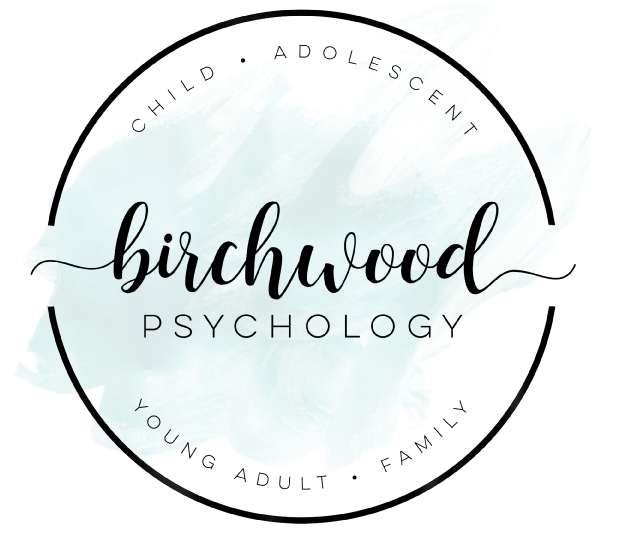Body Acceptance v. Shape Checking: Learning to Like (Or Even Love) An Imperfect Body
Many of you started January off with goals to lose weight, get in shape, or just love your body more. In previous posts, I’ve written about the harmfulness of dieting and why accepting yourself while making small, gradual steps towards a healthier lifestyle is more sustainable. But what if you struggle to accept yourself? What if you look in the mirror and hate your body? What if hating your body is making you feel depressed and unworthy? In this post, I want to talk about how to reduce damaging thoughts about your shape and weight while learning to accept and even love your body.
What is Shape Checking?

Photo by Mathilde Langevin on Unsplash
We all have different things in our lives that we evaluate ourselves on and that give us a sense of self-worth. When people think controlling their weight and shape is really important, they tend to engage in certain unhealthy behaviors. One of those behaviors is called Shape Checking, and it involves over-focusing on the parts of your body you don’t like and comparing these parts to those of other “skinnier” or “more attractive” people. For example, my thighs may not be that large compared to the average American woman, but when I compare them to the thighs of Gigi Hadid or Hailey Bieber, they look enormous to me! Focusing just on the body parts you are unhappy with and comparing them only to others you judge to be better-looking leads to an overly simplified view of your perceived imperfections and increases concerns about your body shape.
How do you evaluate your worth?
Our self-evaluation system can be pictured as a pie chart. Ideally, this “self-worth pie” is divided up into four or more roughly equal slices (the more the better). Some of them may be slightly larger than others, but no one slice is greater than the rest combined. However, when shape and weight is of excessive importance to a person, this slice of their self-worth might make up more than half of their pie. If you allow your self-worth to be based mainly on your shape or weight, you can easily end up feeling bad about yourself when things aren’t going well in this slice. For example, if you ate too many cookies at lunch, couldn’t motivate to go for a walk in the afternoon, and weighed an extra pound that evening you might end up thinking, “I’m so fat and ugly. No one will like me if I gain any more weight. I might as well eat the whole box of cookies now because I already blew it.” And the other slices of your pie will be too small to make up the difference. Instead, it is a lot safer (and healthier) to diversify and equally distribute the domains on which you evaluate yourself.


Because we tend to evaluate ourselves on the basis of success we achieve in different areas of life we consider important, the first step in accepting your body is to increase the importance of other domains in your life. Consider your values and what else besides shape and weight is important to you. Is it your friendships? Your relationships with family? Sports or music? Dance or martial arts? Your job or academic performance? Make a specific plan to increase your involvement in a variety of activities related to these domains. As you do, you will likely get positive feedback from others and a sense of pleasure or achievement from your experience that can contribute to feeling good about yourself in ways totally unrelated to your shape and weight. (For more information about how increasing activities and purposefully scheduling them throughout the week can help lift your mood and decrease unhealthy urges, read this previous blog post I wrote on Activity Scheduling.) The point here is, find other things to focus on, unrelated to shape and weight, that help you feel good about yourself. Then make a plan to increase your involvement in those activities. As you do, you will notice the importance of shape and weight in your life begin to decrease.

Photo by Thao Le Hoang on Unsplash
Question your Shape Checking
To further decrease the excessive importance of shape and weight in your life, you also need to directly address the behaviors that are expressing its importance. One specific behavior that maintains body dissatisfaction is Shape Checking. As a result, Shape Checking can encourage unhealthy behaviors like extreme dietary restraint or excessive exercise and confirms your belief that your body or body parts are “wrong” and need to be changed. Common forms of Shape Checking include:
- Scrutinizing particular body parts in the mirror or other reflective surfaces
- Measuring your body with a tape measure
- Pinching or touching your body parts
- Assessing the tightness of particular items of clothing (waistbands) and accessories (watches or rings)
- Looking down at your thighs or stomach when sitting
- Comparing yourself with others
Shape Checking can sometimes be so habitual and ingrained that we are barely aware that we are doing it. To increase your awareness of the frequency and types of shape checking that you engage in, try monitoring the behavior for 24 hours. Every time you notice yourself doing one of the above-mentioned forms of shape checking, write it down. At the end of 24 hours, look over your monitoring record and ask yourself the following questions:
- What am I trying to find out when I check my body?
- Can I really find out this way?
- Why am I checking myself so frequently?
- Does body shape change quickly enough to justify such frequent checks?
- Do I ever look at body parts that I like?
- Does shape checking make me feel better or worse?
- Does my shape checking have any negative effects?
Here’s a few things to consider. One, checking your shape to see if your body is changing throughout the day does not provide reliable data because there are normal and expected differences in body shape between the morning and the afternoon based on eating, drinking, and bathroom use. For example, fluctuations in the shape of our abdomen as we eat, drink, and use the bathroom throughout the day are normal and do not correspond with a real, lasting change in weight. Your weight can fluctuate up to 6 pounds a day based on your hydration status alone! Two, some aspects of body shape, such as having a slightly protruding abdomen, are normal. Constantly checking your shape, on the other hand, can cause even the most attractive people to find “flaws” in their appearance.
Stop checking parts and see your whole body instead
The long and the short of it is that shape checking makes you feel bad so try not to do it anymore! The forms of shape checking best stopped altogether include pinching or repeatedly touching body parts, feeling bones, checking tightness of watches or rings, looking down at the way one’s abdomen bulges over waistband or thighs spread, and any secretive checking behaviors that would be embarrassing if found out. These behaviors undermine your self-respect and result in negative thoughts and feelings about your body. To the best of your ability, go cold turkey. Although you might notice a brief increase in your preoccupation about shape, negative thoughts about your body should noticeably reduce after a few weeks.
Mirror checking and comparison making, on the other hand, can be modified. It is appropriate to look in the mirror to briefly check your hair and clothing, apply or remove make-up, and to shave your face or brush your teeth. It is inappropriate and unhelpful to spend long periods of time looking in the mirror scrutinizing body parts that you dislike. Learn to catch yourself in the act of looking at your reflection and, before you shape check, ask yourself the same series of questions we asked above beginning with What am I trying to find out by checking and can I really find out this way? With mirror use, it’s also important to realize that the image you see in the mirror is distorted and not to scale. Additionally, what you see is influenced by how you look at yourself. Are you looking at your whole body, or are you focusing just on those specific parts you don’t like as much?
We can avoid magnifying our apparent defects by looking instead at the whole body, including more neutral areas (e.g., hands, feet, knees, hair). In addition, take in the background environment as this helps give a sense of scale. If you spend a long time in front of mirror deciding what to wear or frequently switching outfits, try committing to an outfit before you try it on and do not get dressed in front of a mirror. Comparing yourself to others is another shape checking behavior that should be modified, for example, by purposefully comparing yourself to a wider variety of people (not only the “thin” ones) and noticing the many other ways people can be attractive aside from their weight and shape. Notice also that people thinner than you are not necessarily flawless and may still have other imperfections themselves (e.g., skin, hair, teeth, cellulite, stretch marks, etc.). That’s because imperfections are normal.
Use self-compassion to accept your perfectly imperfect body!

Photo by AllGo – An App For Plus Size People on Unsplash
I’ll end with this… Bodies come in all shapes and sizes, and you have limited control over yours. This is because your body has a natural “setpoint” weight range determined before your birth by your genetics. Your setpoint is the weight that is physiologically optimal (natural and healthy) for your body, and there is nothing you or I can do to change it. Making small, gradual lifestyle changes such as improved nutrition and increased activity can help you stay on the lower healthy end of your range if that is what you desire. However, we cannot magically become an entirely new person and our happiness will not drastically improve even if we could. People of all sizes can be unhappy with how they look. This is because happiness is built upon so much more than shape, weight, and appearance. But learning to treat the body you were born into with the same compassion and kindness you would offer to your best friend’s body will help you feel better about yourself. So when you do (briefly) look in the mirror, focus on what you like most about your appearance. Channel your kindest friend and compliment your hair, your eyes, your smile, or your legs like they would compliment you and vice versa. Ask yourself what would my best friend say? And then focus your energy on changing that which is completely within your ability to control such as hairstyle or color, clothing that makes you smile and fun accessories, beautiful makeup or stylish eyewear. And importantly, look beyond your shape and weight to increase time spent on other areas of life that make you feel good about yourself! As you do, the excessive importance you give to your appearance will gradually decrease.
~~~~~~~~~~
If your struggle with your body is making you feel depressed or you are dealing with an eating disorder and/or overweight/obesity and live in Michigan, I can help. Reach out to ask me about the evidence-based treatments I offer.


